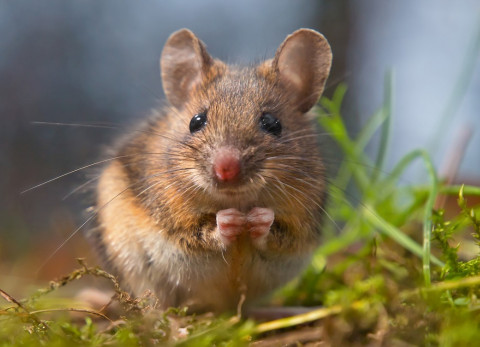Importance of biological clock can only be seen in the wild

Importance of biological clock can only be seen in the wild
The impact of biological clocks on nature and our lives is enormous. Jet lag, mating, bird migration: so much depends on the keeping of time in our bodies and those of other organisms. The latest issue of the world's oldest scientific journal is dedicated entirely to the topic. Featuring researchers from the Netherlands. Philsophical Transactions of the Royal Society B is the journal in which Charles Darwin and Antonie van Leeuwenhoek once published. Joining them is "a great honour", says Prof. Theunis Piersma of the Royal Netherlands Institute for Sea Research (NIOZ).
The journal's theme issue on 'wild clocks' follows an international symposium organised by the University of Groningen (UG), together with NIOZ and the Netherlands Institute of Ecology (NIOO-KNAW).
Speaking the same language
Research on the biological clock recently received a Nobel Prize. In order to truly understand its impact on the lives of organisms, further research is needed into circadian rhythms in nature. "Ecology and chronobiology, the biology of the clock, must be reunited", say researchers Prof. Menno Gerkema and Prof. Roelof Hut of the University of Groningen.
"Sixty years ago, these disciplines were working together, but then chronobiologists started focusing on the mechanics of the clock and ecologists on timing in nature. They need each other, though, to reveal the true impact of time on organisms." So it's time they start speaking the same language again.
The joint symposium was a step in this direction. It has resulted in more than ten academic publications on the keeping of time by wild animals, collected in the latest theme issue of Philosophical Transactions of the Royal Society B which appeared on 19 November.
Out we go
In addition to the day-to-day clock, of which we know quite a lot by now, there are the rhythms of the seasons and the tides. Much less is known about these, and they are hard to research from an office. So, out we go, with all sorts of new tools to help scientists.
They can secretly adjust the clock's mechanism, use substances which reveal to them the position of the clock in the brain and the body, and track animals in the wild through both time and space with much less effort than before.
With these tools they can study, for instance, how migratory birds make use of temporary food peaks in areas several thousand kilometres away. A clock can also help these birds navigate during their trip.
From migration to mating
But what does nature or, for instance, a potential partner base selection on exactly? The clock appears to be either a killjoy or a matchmaker in all kinds of interactions, from migrating to mating.
"And the sea clock is the most complicated of all", says NIOZ researcher Prof. Theunis Piersma. "Not only the rhythms of day and year play a role here, but also those of ebb and flow and of the moon."
That's a lot of clocks ticking in one and the same animal, a delicate system that must not be disturbed by, for example, light pollution or climate change.
Evolution
Mice that are active at night in the lab will suddenly become active during the daytime under natural circumstances: quite a difference if you're trying to draw conclusions for your research. At higher levels, too, the differences between lab and field research can be substantial.
NIOO researcher and animal ecologist Prof. Marcel Visser emphasises the importance of field research: "We can only understand why the clock works the way it does if we study 'wild clocks', clocks that formed under natural conditions through evolution."
_____________________________________________________________________________
With more than 300 staff members and students, NIOO is one of the largest research institutes of the Royal Netherlands Academy of Arts and Sciences (KNAW). The institute specialises in water and land ecology. As of 2011, the institute is located in an innovative and sustainable research building in Wageningen, the Netherlands. NIOO has an impressive research history that stretches back 60 years and spans the entire country, and beyond.
More information:
- Prof. dr. Menno Gerkema (RUG), m.p.gerkema@rug.nl, tel. +31-6-246426716
- Prof. dr. Roelof Hut (RUG), r.a.hut@rug.nl, tel. +31-6-13914389
- Martin Bulla (NIOZ), tel. +31-222-369578
- Thomas Oudman (NIOZ), tel. +31-222-369541 / +31-6-18086820
- Prof. dr. Marcel Visser (NIOO-KNAW), m.visser@nioo.knaw.nl, tel. +31-6-51392453
- Froukje Rienks (science information officer NIOO-KNAW), f.rienks@nioo.knaw.nl, tel. +31-6-10487481 / +31-317-473590
